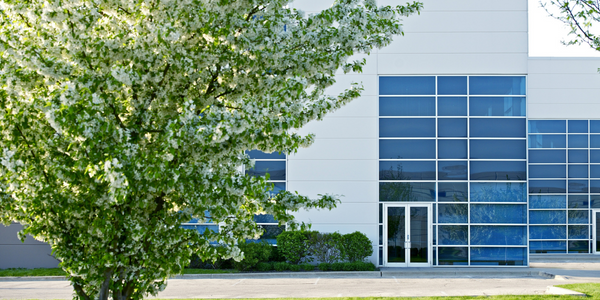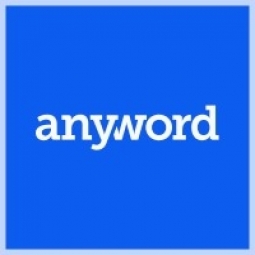Technology Category
- Networks & Connectivity - NFC
- Platform as a Service (PaaS) - Application Development Platforms
Applicable Industries
- Cement
Applicable Functions
- Quality Assurance
- Sales & Marketing
Use Cases
- Experimentation Automation
- Time Sensitive Networking
Services
- Testing & Certification
- Training
About The Customer
The customers in this case study are various news organizations across the U.S. that participated in the Accelerator Program with the Facebook Journalism Project. These include the Omaha World-Herald, Miami Herald, Philadelphia Media Network, Atlanta Journal-Constitution, Denver Post, Minneapolis Star-Tribune, Dallas Morning News, Seattle Times, Boston Globe, Chicago Tribune, the Tennessean, the San Francisco Chronicle, Newsday and Advance Local for Syracuse.com, among others. These news organizations were looking to enhance their digital subscription businesses, with a particular emphasis on subscriber engagement and retention.
The Challenge
In early March, news organizations across the U.S. initiated an Accelerator Program with the Facebook Journalism Project. The primary objective was to collaboratively enhance their digital subscription businesses, with a particular emphasis on subscriber engagement and retention. This initiative was a follow-up to the Accelerator’s pilot program in 2018, which focused on acquiring digital subscribers. The challenge was to improve subscription retention and engage the newsroom to help keep subscribers engaged. The participating publishers, including the Omaha World-Herald, Miami Herald, Philadelphia Media Network, Atlanta Journal-Constitution, Denver Post, Minneapolis Star-Tribune, Dallas Morning News, Seattle Times, Boston Globe, Chicago Tribune, the Tennessean, the San Francisco Chronicle, Newsday and Advance Local for Syracuse.com, among others, were tasked with building on these learnings over the next nine months.
The Solution
The solution involved a two-day, in-person session covering topics like each news publisher’s results strengthening their subscriptions business since the 2018 Subscriptions Accelerator, prioritizing the metrics that matter when measuring subscriber retention, and engaging the newsroom to help keep subscribers engaged. For instance, the Chicago Tribune focused on increasing newsroom engagement with straightforward metrics ‘scorecards’ for each market, as well as individual dashboards for editors and reports. They also engaged subscribers through paid campaigns and customized content recommendations in Zaius email platform to drive digital subscriber growth and retention. The Seattle Times, on the other hand, made a serious push into rigorous A/B testing, testing price, payment options, newsletter signups and recirculation of related stories, among others.
Operational Impact
Quantitative Benefit

Case Study missing?
Start adding your own!
Register with your work email and create a new case study profile for your business.
Related Case Studies.

Case Study
System 800xA at Indian Cement Plants
Chettinad Cement recognized that further efficiencies could be achieved in its cement manufacturing process. It looked to investing in comprehensive operational and control technologies to manage and derive productivity and energy efficiency gains from the assets on Line 2, their second plant in India.

Case Study
Digital Transformation of Atlanta Grout & Tile: An IoT Case Study
Atlanta Grout & Tile, a Tile, Stone & Grout restoration company based in Woodstock, Georgia, was facing challenges with its traditional business model. Despite steady growth over the years, the company was falling behind the web revolution and missing out on the opportunity to tap into a new consumer base. They were using independent software from different vendors for each of their department information and workforce management. This resulted in a lot of manual work on excel and the need to export/import data between different systems. This not only increased overhead costs but also slowed down their response to clients. The company also had to prepare numerous reports manually and lacked access to customer trends for effective business decision-making.

Case Study
Revolutionizing Construction Equipment Rental: A Case Study on ProsRent and ENO8
ProsRent, a startup that won the 'Best Financial Opportunity' and 'Best Pitch' at CodeLaunch 2016, aimed to revolutionize the way construction professionals source and rent heavy equipment. In the construction industry, project managers and contractors typically rent heavy equipment from supply companies. However, predicting inventory can be challenging, and finding the required equipment at the right time and place can be a hassle. If the preferred vendor doesn't have the required equipment, it results in wasted time and money in searching for it, often leading to higher costs due to non-preferred rates and increased delivery costs if the vendor is located far from the job site. Suppliers, on the other hand, desired access to a wider base of trusted renters that they didn't have to vet themselves and wanted to offer dynamic rental pricing based on demand and availability in their market. ProsRent's challenge was to produce a minimum viable product that was fast and first to market but also strong enough to engender loyalty and repeat business from the target market.

Case Study
AI-based Automation for Commercial Office HVAC: A Verdigris Case Study
Modern buildings are required to run longer hours, support a variety of end uses, and contribute to higher levels of economic productivity, leaving a thin margin for error. However, even the most advanced building and environmental control systems have failed to adequately support facilities and operations management. Buildings are often inefficient and the people using them are underserved. To meet occupant comfort and maintain cost and energy efficiency, a dynamic, AI-assisted approach is needed.

Case Study
Revamping EE's Legacy ERP: A Case Study on BT's Strategic Transformation
EE, even after its merger with BT, was operating its ERP estate on legacy infrastructure, hosted on the premises of a third-party supplier. This outdated system resulted in a volume-based operational model, higher time to market, longer delivery cycles, and unsatisfactory customer experience. BT recognized the need for a strategic transformation of these aging ERP systems and sought a partner who could proactively manage application services. The partner was also expected to handle development requirements associated with application management services, drive accountability, and ownership with a time and target-driven transformation of these services. BT's primary goals were to improve customer experience, reduce cycle time, and measure these improvements with precision.








